News
TUD Dresden University of Technology for the Performing Transformation: Shifting Landscapes in Art, Science, and Technology conference
The signing of this agreement extends the Arts and Humanities Research Council’s (AHRC) longstanding partnership with Deutsche Forschungsgemeinschaft (DFG) for a further five rounds starting in October 2026.
This will foster new opportunities to combine the strengths of world-leading arts and humanities researchers in the UK and Germany and to explore questions that improve our understanding of the world.
This research partnership also supports the EACVA project!
https://www.ukri.org/news/ahrc-and-german-research-foundation-renew-research-partnership
In her solo exhibition at Yvonne Hohner Contemporary, multidisciplinary artist Gretta Louw presents works from three new series exploring technologically mediated painting and drawing.
The title High Tech High Touch references futurist John Naisbitt’s book on how emerging technologies interact with human experience. Louw investigates the paradox of advanced automation increasingly depending on human creativity and input, and explores the artistic potential of working with robotic systems.
In the main gallery space, two visually distinct series are united by their roots in digital drawing. Luminous acrylic sculptures translate hand-drawn lines into light using advanced manufacturing techniques, while soft, tactile textile works begin as digital drawings that are machine-embroidered, then hand-painted by the artist.
A second room features new oil paintings and a video documenting Louw’s collaboration with the e-David painting robot and the Visual Computing team at the University of Konstanz. This collaboration highlights not only the limits of current technologies, but also the complexities of embodiment—both human and machine.
https://www.yvonne-hohner-galerie.com/blog/high-tech-high-touch
EACVA presentation on the Interdisciplinary Perspectives on Human and Machine Creativity. interdisciplinary insights on therelationship between human creativity and artificial intelligence. Center for Humans & Machines at the Max Planck Institute for Human Development in Berlin
AHRC and DFG celebrated more than 100 funded projects in the DFG/AHRC bilateral funding initiative in a two-day workshop with 60 invited guests, among them PIs from funded projects, panel chairs, representatives from DAAD, British Council, AHRC and DFG.
Posters of selected projects, including EACVA, can be found here:
https://www.dfg.de/en/research-funding/funding-opportunities/funding/ahrc/selected-projects
Upcoming talks that will be held during the upcoming symposium at the CLB in Berlin.
Embodied Agents in Contemporary Visual Art
The symposium will feature ongoing works and discussions, bringing together researchers and practitioners from visual arts, computing, robotics, cognitive science, psychology, and sociology to explore cutting-edge developments in robotics and art and present an art exhibition featuring works by EACVA artists in residence program.
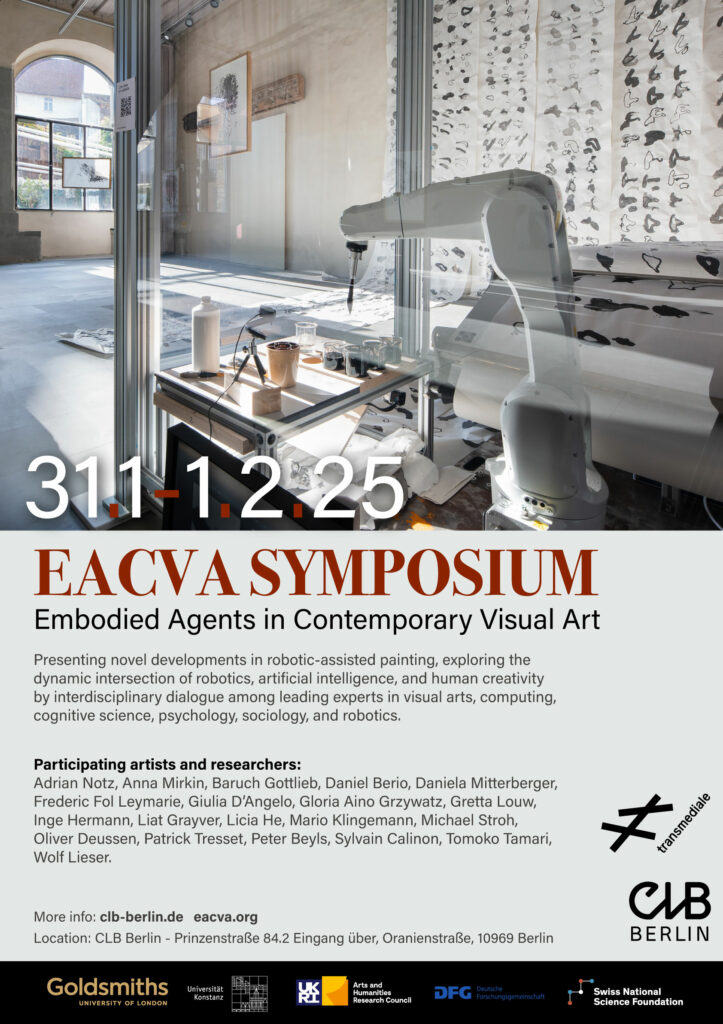
Vernissage: 24.01.2025, 18:00
Exhibition Dates: 25.01.2025 – 02.03.2025
Artist Talk: 31.01.2025, 18:00
A robotic art installation by Liat Grayver and Dr. Daniel Berio in collaboration with the Nanoparticle Systems Engineering Laboratory headed by Prof. Dr. Inge Herrmann
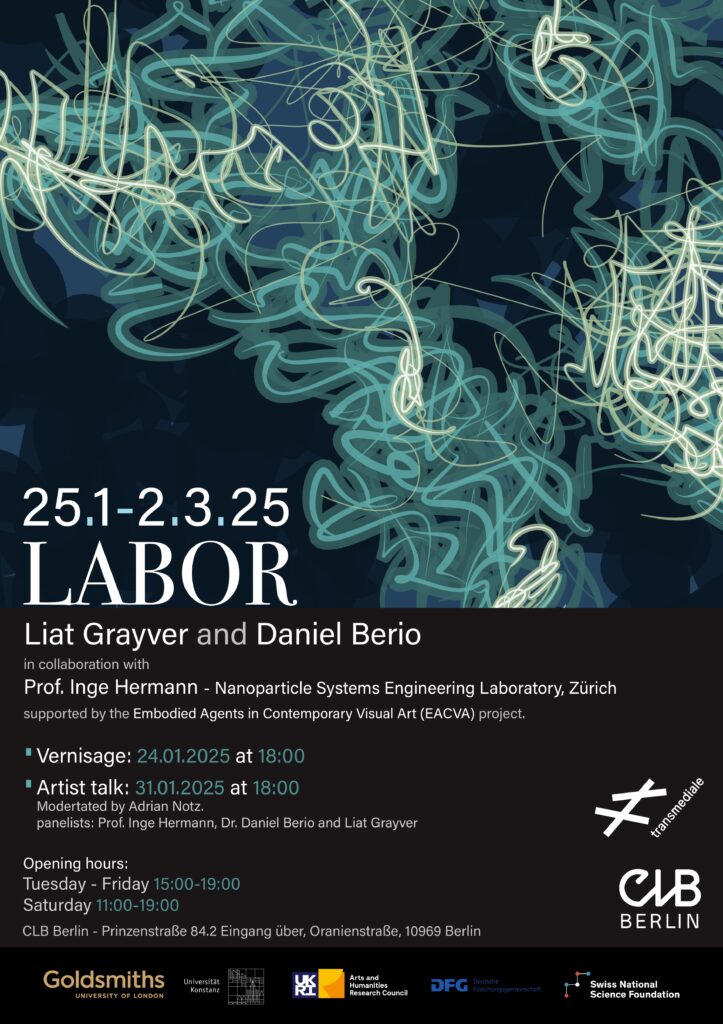
AAA Experiments in AI, Art and Architecture
Join Inge Herrmann (ETHZ) and Liat Grayver (EACVA) for a conversation about their collaborative work “Labor.”
WANTH. WE ALL NEED TO HEAL
We kickstarted the Artists in Residence program with a two-day workshop. The first day was hosted by Goldsmiths, University of London. Our core team introduced our research in various domains: human cognition by Rebecca Chamberlain, sociology by Tomoko Tamari, and computer science by Michael Strow and Daniel Berio. The second day was hosted by the Victoria and Albert Museum and featured artistic presentations by core team artists Daniel Berio and Liat Grayver. This was followed by presentations of new projects by our Artists in Residence: Gretta Louw, Patrick Tresset, Anna Mirkin, and Licia He.

Philosophy of AI – Speaker series with Roman Lipsky and Liat Grayver.
link for online participation: https://uzh.zoom.us/j/62103774684?pwd=MHJZZGJFT0NJOEhGLzFhS1hqaWh0dz09
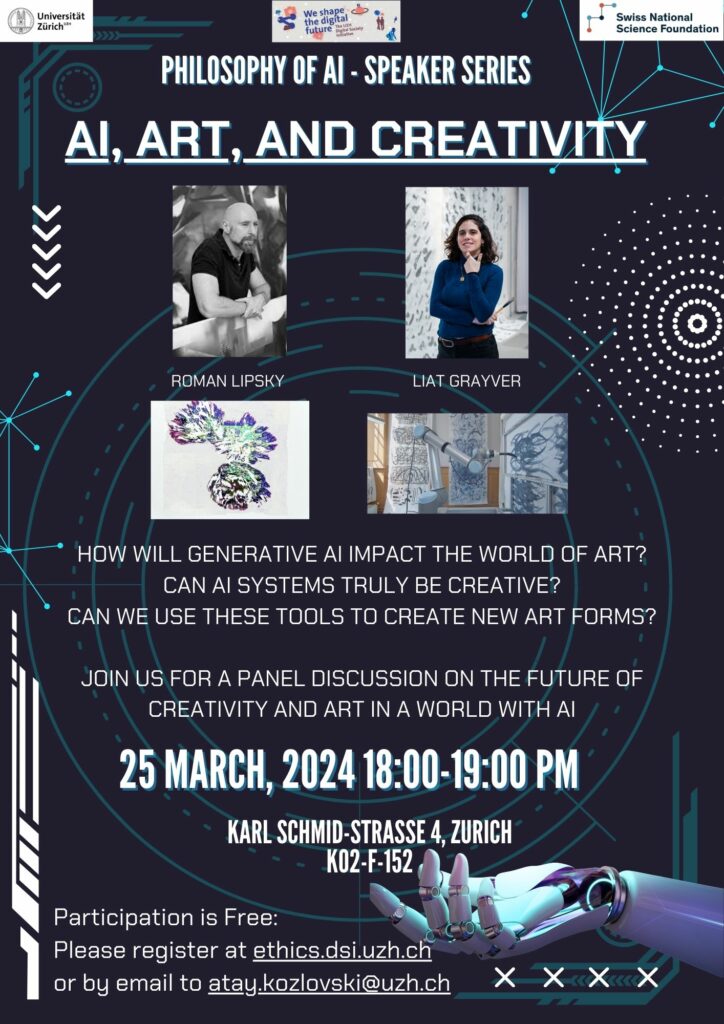
- The role of AI in shaping diversity and inclusion.
- Strategies to mitigate bias and promote fairness in AI algorithms.
- Opportunities for leveraging diversity to enhance AI innovation.
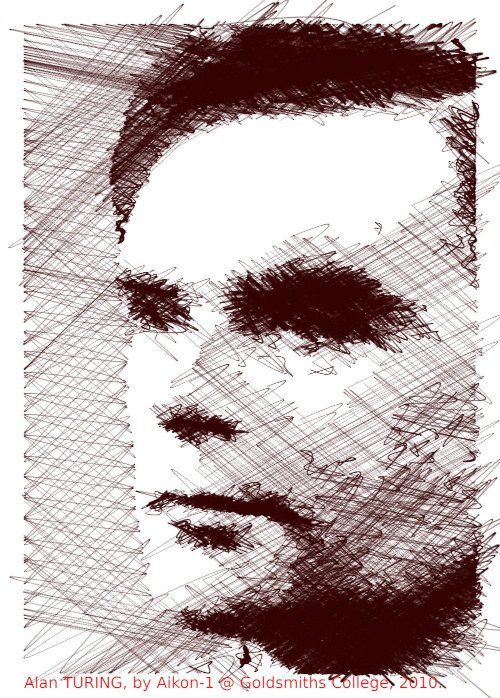
Engage in insightful discussions, share your perspectives, and collaborate towards a more inclusive AI future and contribute to the programme:
- EDI, AI and Creative Health.
- Creative AI
- Brokering: Presentation of project pitches by internal and external researchers
- Showcasing: EDI&AI@Westminster: interactive sessions, Demonstrations, Posters, Videos, etc.
- Panel: EDI and creative AI
Invited Talk (EDI & Creative AI: Prof Frederic Fol Leymarie, Goldsmith, University of London) and Panel “EDI and creative AI” as part of the Alan Turing Institute’s Fringe event
“Through the Medium: Navigating the Shifting Landscape of Creative Expression and Machine Collaboration”
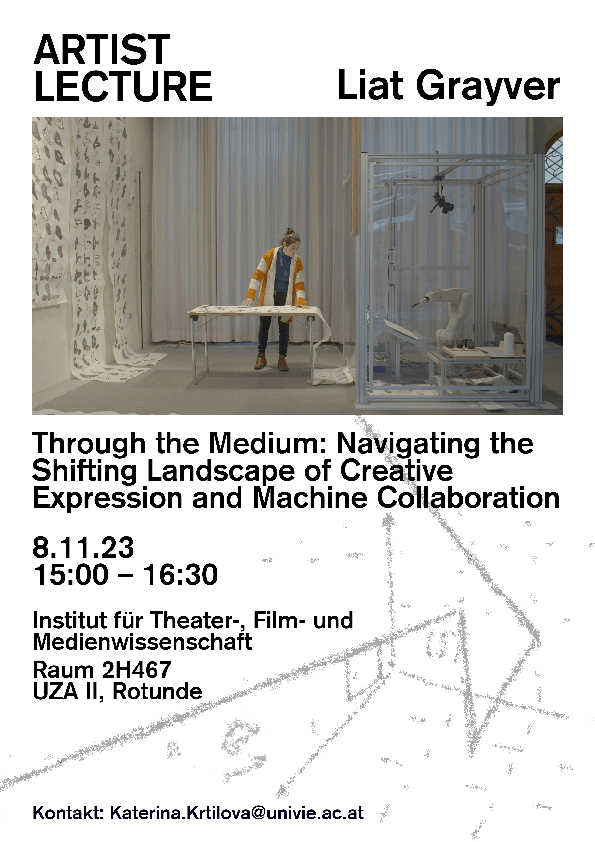
“(P)anel discussion that delves into the fascinating realm where artificial intelligence intersects with the creative process. Led by esteemed experts in the field, including Prof. Frederic Fol Leymarie (chair), Piotr Mirowski (DeepMind & Improbotics), and Massimo Magee, this thought-provoking session will explore how AI might revolutionizing the creative process.”
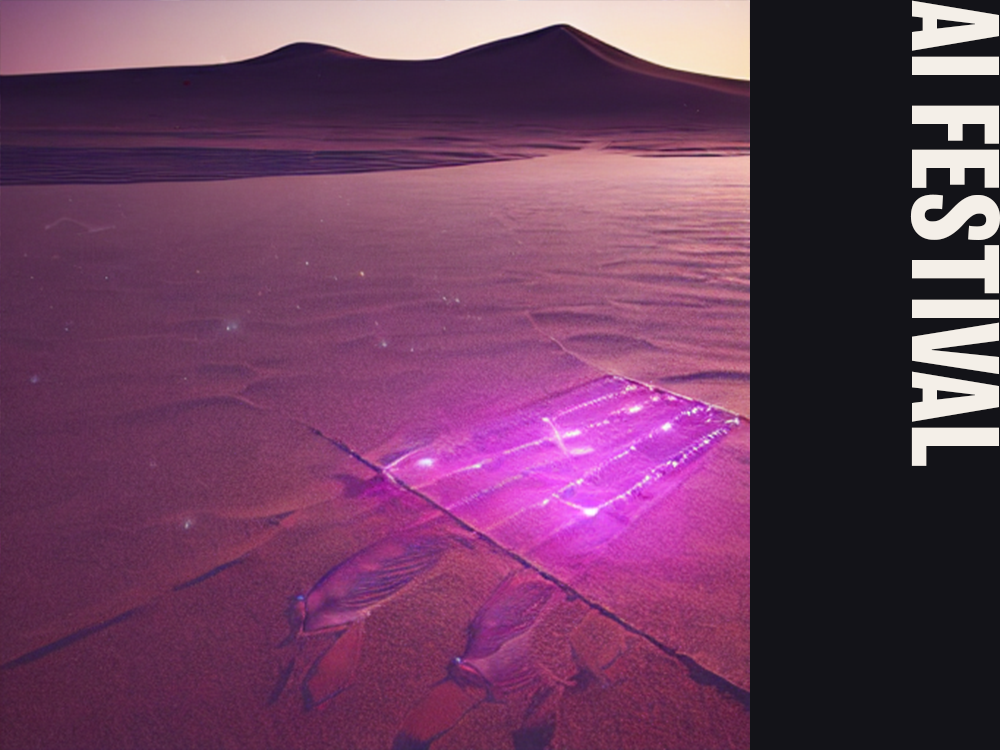
Co-organised by Goldsmiths (co-chair: Prof. Frederic Fol Leymarie)
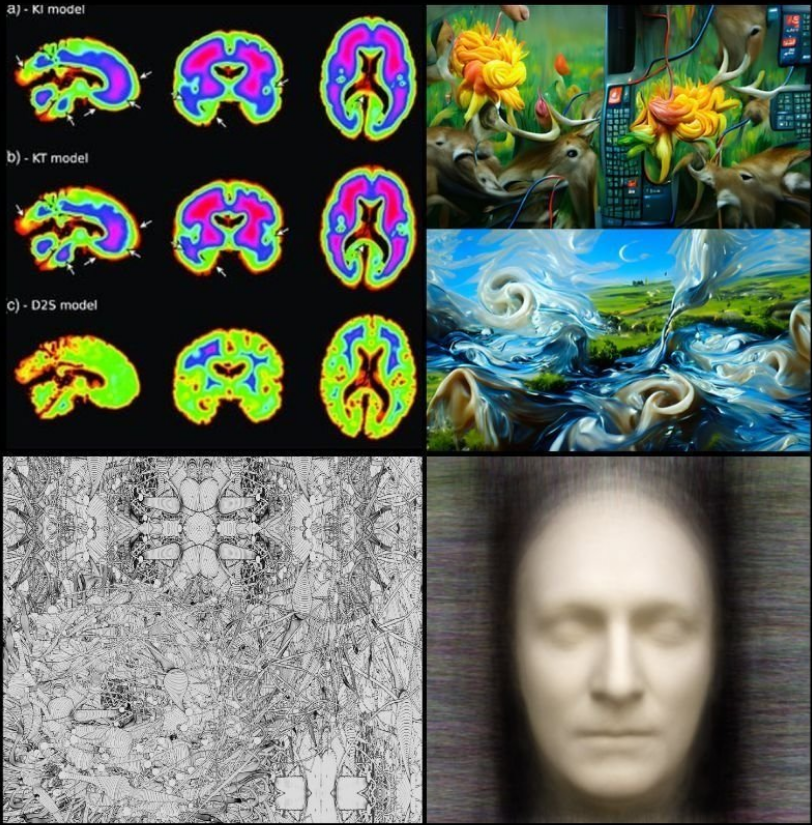
This event is part of the 2022 Berlin Science Week and organized by ETH Zürich With: Chris Luebekeman, Liat Grayver, Alexander Ilich, Adina Popescu
Graffitizer 2 is an installation featuring a pen plotter and a projector. A computer program generates forms that are incrementally traced with ink by the plotter. At the same time, the drawing in progress is augmented with real-time projections, which results in a dynamic colouring that mixes real ink with projected light as a painterly medium.
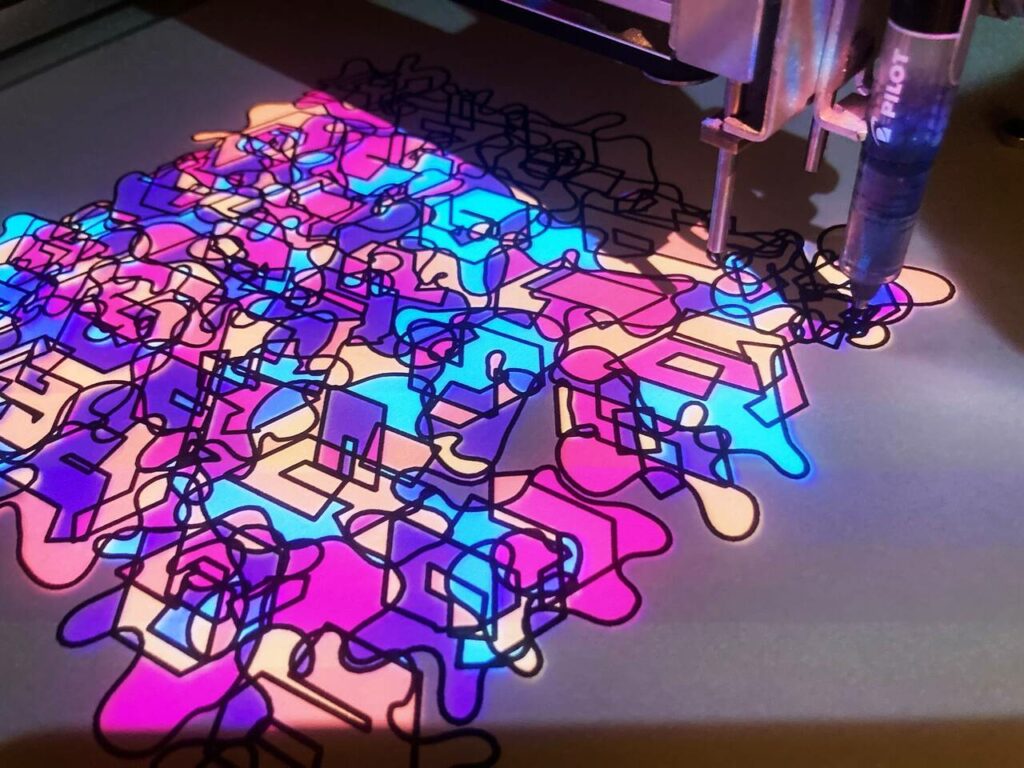
Liat Grayver, Daniel Berio and Nora Al-Badri
The work is presented as a room installation consisting of a series of drawings made with the support of the e-David robotic painting lab at the University of Konstanz. Using software developed by Berio, a range of instances, each based on a mathematical model of Arabic patterns established by computer scientist Craig Kaplan, were derived using the system; a singular pattern was selected by the three artists as the source material to generate the entire body of drawings.

Focusing on robots, our third seminar explores the significance of the materiality of the body in the relationship between biology, AI and embodied knowledge.
Group show with Liat Grayver, Katharina Haucke, Marcus Maeder, Martin Lucas Schulze
A production of knowledge independent of hegemonically recognized knowledge is an intention that all the artists common to all the artists in the Kunst forscht exhibition and whose title is a reference to “Jugend forscht”, the well-known competition for pupils and young people in the natural sciences. The Israelian artist Liat Grayver, for example, makes use of intensive correspondence in the production of her paintings and drawings.
intensive correspondence with robots in the production of her paintings and drawings. The Berlin artist experiments with the transformation possibilities of the human voice.
Berlin artist and musician Katharina Hauke experiments with the transformation possibilities of the human voice. To this end, she is developing an apparatus that she calls the MikroKontrolleur. The Chemnitz-based artist deals with physical phenomena of Chemnitz artist Martin Lucas Schulze deals with physical phenomena of various kinds. The result, as he puts it, is an alternative knowledge production in which he wants to make the functional structures of decay processes visible.
From the systematic observation of climatic changes, the Swiss artist Swiss artist Marcus Maeder derives his artistic works captured in multimedia installations.
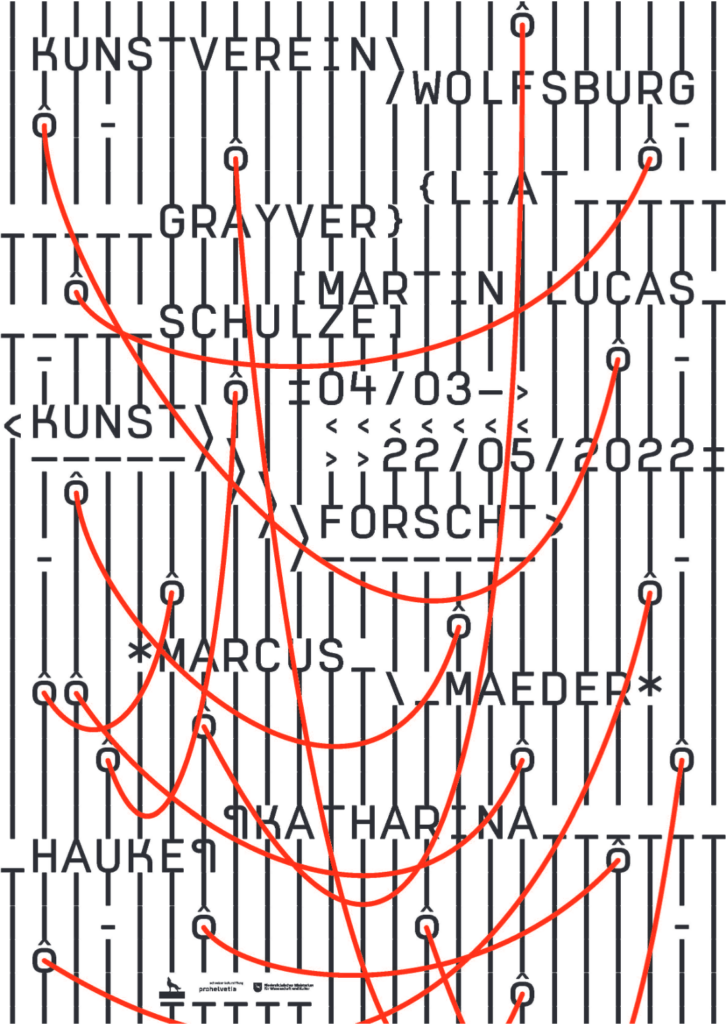
Liat Grayver and e-David team
The show instigates a complex dialogue between an evolving deterministic process, computational vision analysis, and organic painterly action. Data extracted from a simulated world is transformed into real-world materials before being translated back into data in a continuous loop of action and reaction, of observation and depiction.
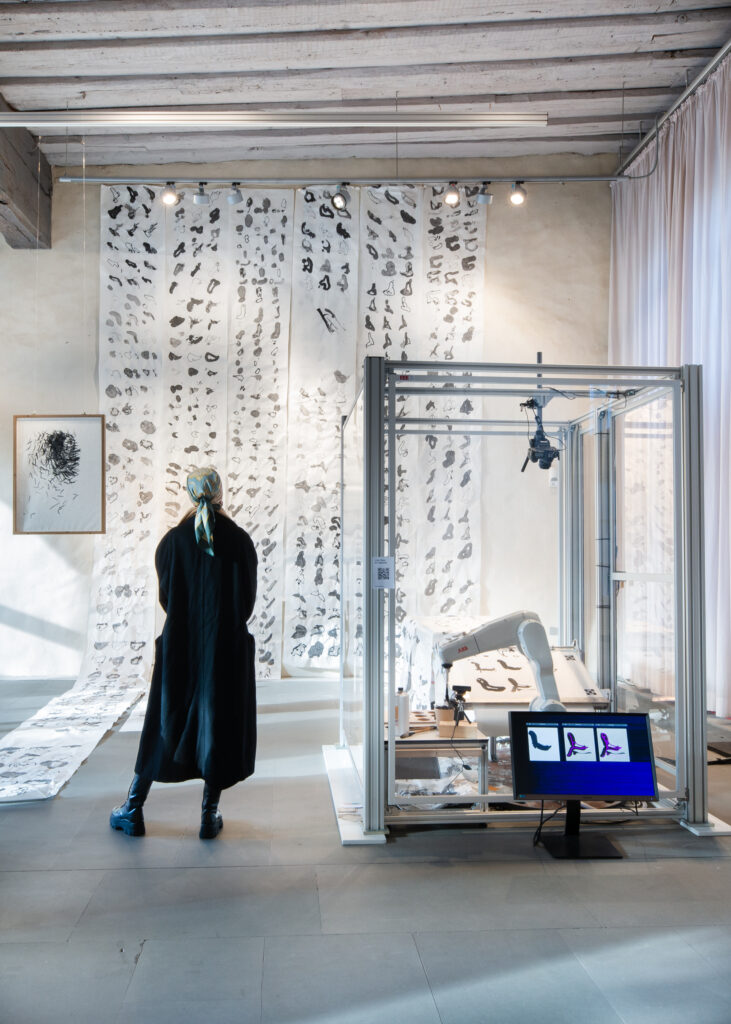
© VG-BildKunst, Liat Grayver
How can computing tools and robotics support graffiti art and calligraphy? Programmer and artist Daniel Berio presents and demonstrates the use of ”stroke primitives” as building blocks in his design and art.
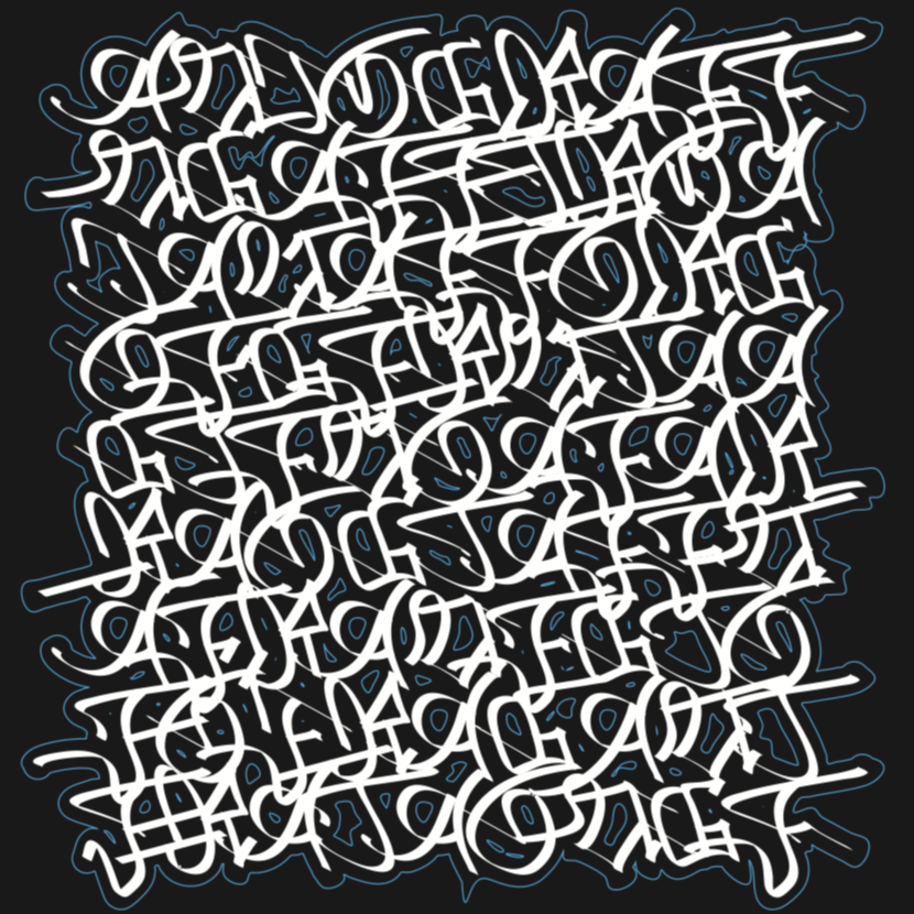
The 35th Chaos Communication Congress (35C3) 2019
Liat Grayver (Artist in Residenz Excellence Cluster Fellowship“Cultural Foundations of Social Integration”,) the e-David team Marvin Gülzow, Casa Paganini InfoMus, and Dr.Antonín Šulc
The space brings together several collaborative works that varyingly employ robotic technologies, motion tracking, video, and painting. As a whole, this body of works investigates the relation between organic practices and machine-based systems, both of which are used to create structures from physical actions (operation) and from the mind (perception).
The e-David robot is positioned in the centre of the exhibition and continuously generates calligraphic- paintings. The data for the robot’s brushstrokes is generated from analysis of the visitors’ movements in the space, captured using a camera and custom motion-tracking software. As they enter the exhibition space, individual visitors’ movements are captured by the video camera, and their location and movement are translated into a digital trajectory that is projected on a large, transparent black screen. The individual trajectories are translated into brushstrokes painted by the robot on a long rice paper roll, which is advanced by a paper feed. At the end of each day, the roll is fully painted with different calligraphic lines describing the movement of visitors throughout the space. These are hung in the gallery space on custom-made frames functioning as evidence and testimony of each of the days the exhibit runs.
Liat Grayver was at the Centre Pompidou, on March 28, 2019, during the STARTS Residencies Days. Discover her residency with the WeDRAW Project in this video.